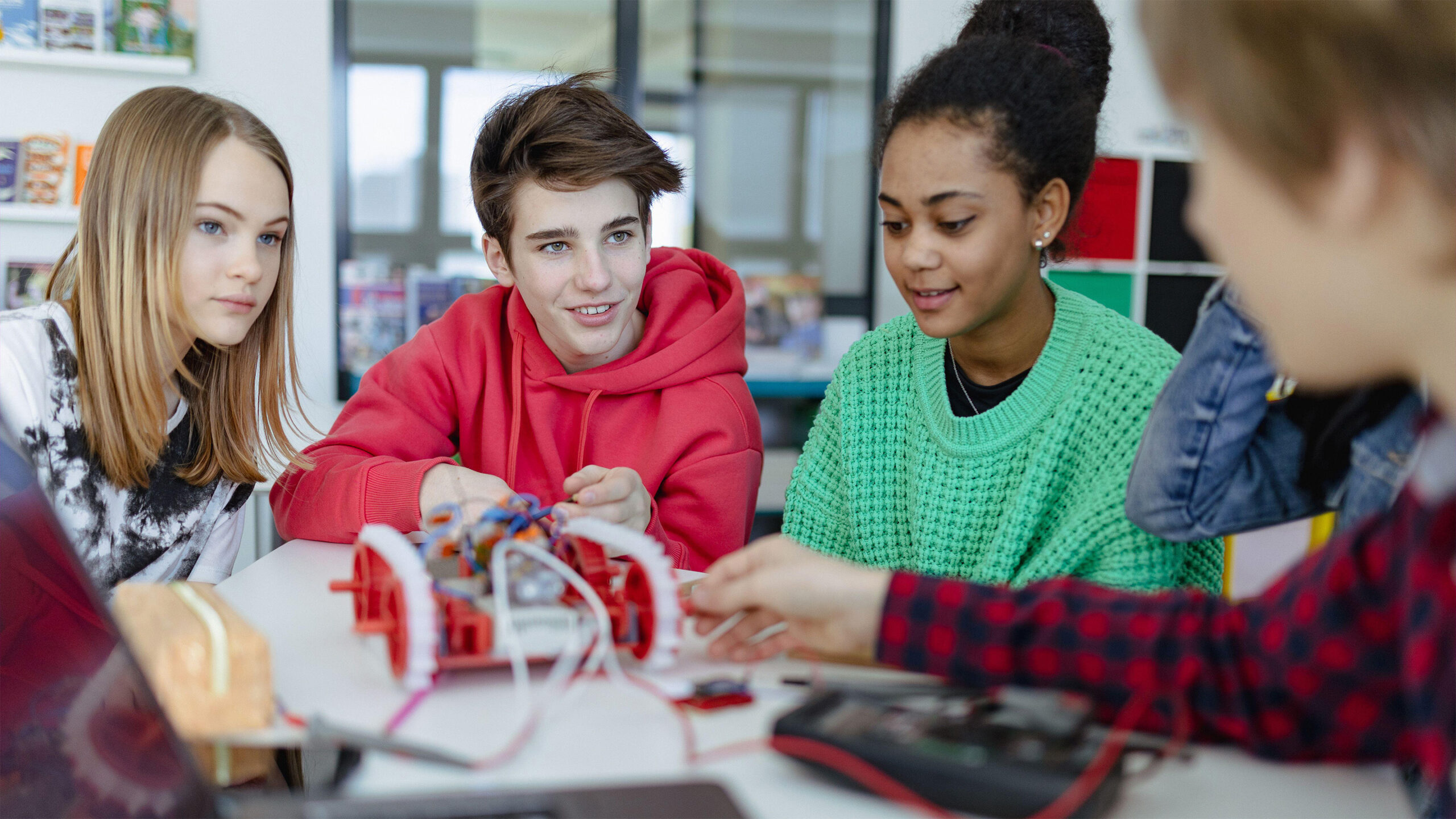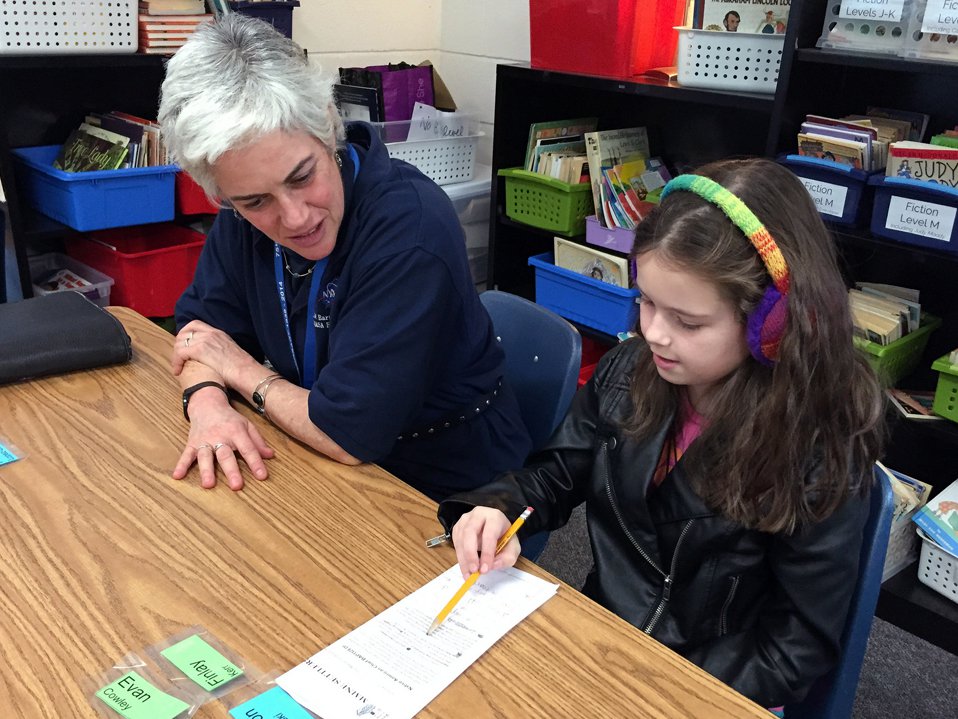[ad_1]
Problem-based finding out (PBL) is broadly often known as a extraordinarily environment friendly educational technique that fosters engaged faculty college students who’re important thinkers and draw back solvers and who possess literacy all through all content material materials areas. PBL moreover helps to develop culturally and socially competent faculty college students who’re environment friendly communicators and worldwide residents. No matter its benefits, PBL stays underutilized in class rooms.
As expert development specialists, we’ve found PBL to be misunderstood in that educators are more likely to create overwhelming and complicated initiatives that discourage their faculty college students and prohibit them from completely embracing it. To take care of this drawback amongst many others, we developed a four-part framework that simplifies the PBL course of by breaking it into smaller, further manageable components.
Proper right here we uncover parts of our foundational concepts, which are an necessary part of our four-part framework. Notably, we take care of establishing a classroom custom that not solely helps project-based finding out nonetheless is useful for any educational setting.
Setting the Stage
Making a bodily classroom setting that helps group work and hands-on actions is crucial. Keep in mind versatile seating and collaborative areas, along with full group and small group areas.
Furthermore, incorporate areas for explicit particular person reflection to foster a sexy and interactive finding out setting. It’ll put collectively you to assemble scholar views and carry out bigger PBL work all yr lengthy.
Understanding Your School college students: Insights and Views
Teachers often spend time in the beginning of the yr on getting-to-know-you actions, akin to icebreakers. Gaining scholar perspective, nonetheless, goes previous straightforward interaction to help lecturers understand their faculty college students’ backgrounds, needs, strengths, and challenges. It entails actions that encourage faculty college students to particular their views, preferences, and experiences, which are invaluable to the PBL course of.
Incorporating scholar views is prime to fostering a constructive PBL classroom custom. By recognizing and valuing how faculty college students perceive education and what they carry to the desk, educators can enrich any finding out setting. This technique appreciates each scholar’s distinctive contributions, promoting mutual understanding and cooperation. It creates a dynamic classroom the place faculty college students actively work together with the curriculum and each other, deepening their connection to their finding out journeys.
Smart Strategies for Implementation
To efficiently implement these concepts inside a PBL framework, bear in mind the following strategies.
- Conduct scholar inventories. Use digital devices like Google Varieties or Mentimeter to create inventories and polls the place faculty college students can share their concepts on PBL initiatives, classroom setting, and educating methods.
- Arrange student-led conferences or advisory panels. Empower faculty college students to take possession of their finding out by presenting their work and reflecting on their progress. You possibly can even kind a panel of students who meet typically to debate and provide recommendations on PBL actions, problem ideas, and classroom custom. This offers faculty college students a correct platform to voice their opinions and have an effect on decision-making.
- Encourage reflection journals. Promote self-awareness and progress by having faculty college students typically doc the tutorial course of and their finding out experiences.
- Apply design contemplating. Work together faculty college students in ingenious problem-solving by guiding them by the phases of empathize, define, ideate, prototype, and check out. As they work by each half in precise time, they’re actively shaping and expressing their views throughout the finding out setting, guaranteeing that their viewpoints are clear to the coach.
Launching into Finding out: Lesson Zero and the 4Cs
Design Challenges
Taking part faculty college students in team-based design challenges is an excellent methodology for enhancing the 4Cs whereas gaining scholar views all through various matters. Listed under are some ideas to get you started. Keep in mind the truth that the target is to develop success talents, to not create good prototypes, so these challenges is perhaps completed in solely a lesson or two.
- Assemble the Tallest Freestanding Development. (Science/Engineering) Using spaghetti, tape, string, and a marshmallow, faculty college students collaborate to assemble the tallest freestanding development.
- Develop a Math Board Sport. (Math) Create a board sport with frequently provides that requires players to utilize math talents to advance.
- Fast Story Drawback. (ELA) Write a short story using a restricted set of phrases or incorporating explicit vocabulary.
- Historic Event Simulation. (Social Analysis) Create a simulation of a historic event the place faculty college students role-play completely completely different figures and make decisions based totally on historic context.
By means of this variety of actions, faculty college students will develop the 4Cs necessary for project-based finding out. Setting up buildings requires planning, teamwork, and fashionable design. Creating math video video games entails logical contemplating, collaborative refinement, and clear communication of tips. Writing transient tales fosters important phrase choice, brainstorming, and environment friendly storytelling. Simulating historic events requires understanding context, teamwork, and expressive role-playing.
These actions collectively enhance faculty college students’ expertise to imagine critically, work collectively, speak efficiently, and innovate all through completely completely different matters.
Inquiry Challenges
Encourage faculty college students to collaborate in team-based actions as they ask questions and draw conclusions based totally on their observations. Very like design challenges, this technique efficiently promotes the 4Cs—important contemplating, collaboration, communication, and creativity—whereas incorporating scholar views all through all matters. These actions, identical to the design challenges, are supposed to be completed inside one or two lessons.
- Plant Growth Assertion. (Science) School college students observe a sequence of vegetation grown beneath completely completely different conditions (e.g., varied portions of sunshine, water, soil varieties). They ask questions in regards to the variations and draw conclusions based totally on their observations.
- Pattern Identification. (Math) School college students are given a sequence of numbers or shapes that observe a selected pattern. They ask inquiries to ascertain the pattern and predict the following devices throughout the sequence.
- Picture analysis. (ELA) School college students research an in depth picture (e.g., a historic {{photograph}}, artwork work). They ask questions in regards to the image and draw conclusions based totally on seen proof.
- Artifact Examination. (Social Analysis) School college students research replicas or photographs of historic artifacts. They ask questions in regards to the artifacts and draw conclusions about their use and significance in historic previous.
School college students develop the 4Cs by actions akin to analyzing plant progress, determining patterns, decoding footage, and inspecting historic artifacts. These duties enhance important contemplating by evaluating conditions and contexts, foster collaboration by group discussions, improve communication by sharing findings, and stimulate creativity in rising hypotheses and imagining eventualities. This whole technique cultivates necessary talents all through various matters, preparing faculty college students for environment friendly project-based finding out.
Incorporating project-based finding out (PBL) throughout the classroom fosters important contemplating, collaboration, communication, and creativity, necessary for rising engaged and competent faculty college students. By means of structured however manageable actions, faculty college students can kind out real-world challenges, enhancing their problem-solving talents and worldwide consciousness.
By adopting strategies outlined proper right here and throughout the book, educators can simplify the PBL course of, making it further accessible and impactful, lastly creating dynamic and supportive finding out environments that put collectively faculty college students for future success.
[ad_2]
Provide hyperlink



